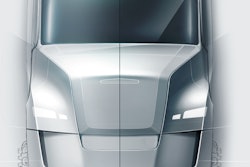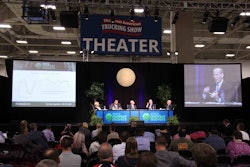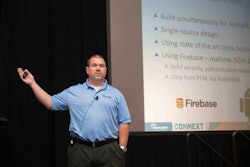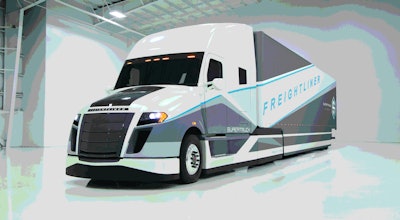 Freightliner’s SuperTruck concept tractor-trailer
Freightliner’s SuperTruck concept tractor-trailerIt’s easy to get caught up in all the glittering new technology truck OEMs and associated component suppliers are putting out today. But according to experts presenting at CCJ publisher Randall-Reilly’s Commercial Vehicle Outlook seminar in Dallas on Aug. 26, the focus is firmly on measured steps with an consistent emphasis on both efficiency and affordability.
Both Bill Kahn, principle engineer and manager of advanced concepts for Peterbilt, and Derek Rotz, who is manager of advanced engineering for Daimler Trucks North America, noted that each company has a “roadmap” for technology adaptation in North America.
Kahn noted that Peterbilt’s efforts today are targeting various technology paths, including ultra-lightweight trucks, hybrid powertrains and simpler concepts such as electrified air conditioning condensers. “We’ve pretty much maxed out the potential of the conventional diesel powertrain today,” he noted. “So we’ll have to rely on different technologies or improve other existing vehicle systems to realize efficiency gains in the future.”
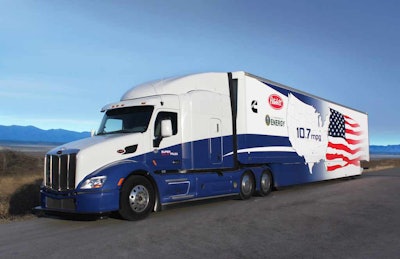 The Peterbilt-Cummins SuperTruck concept vehicle.
The Peterbilt-Cummins SuperTruck concept vehicle.Rotz says Daimler’s overall vision is to leverage technology as “The Road to Accident Free Driving.” Rotz noted that at this point, autonomous trucks and cars are certain to appear in the market in the coming years and stressed the need for standardized command and control systems across the industry to speed acceptance among both fleets and drivers.
The first impact from autonomous trucks will likely be convoys of platooning vehicles cruising our nation’s highways. Josh Switkes, chief executive officer with Pelaton Technology, a leading technology provider for the trucking industry. Switkes says in the very near future, connected trucks on the road will be able to use Cloud-based connectivity to seek out other platoon-capable trucks and electronically link to them to save fuel and cut driver fatigue on long hauls.
Sandeep Kar, vice president of automotive and transportation research for Frost & Sullivan also noted that fleets today are already embracing cutting-edge technology. “More than 37 percent of North American fleets today are using telematics systems to manage their vehicles,” Kar noted. “When I first began tracking telematics, the figure was only 7 percent.” Moreover, Kar noted that take rates on telematics systems for fleets that have previously used telematics systems is 95 percent when those fleets buy new vehicles.
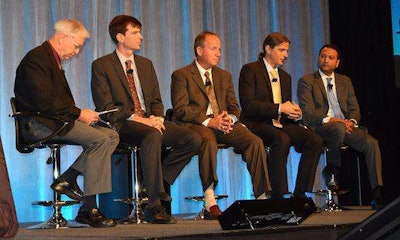 From left: Paul Menig, Josh Switkes, Bill Kahn, Derek Rotz and Sandeep Kar.
From left: Paul Menig, Josh Switkes, Bill Kahn, Derek Rotz and Sandeep Kar.Kar said he does not expect to see Level 4 (fully autonomous) trucks on the highways until 2035, but thinks Level 3 vehicles will be deployed and accepted by fleets fairly soon. And while there will be many benefits to Level 3 automated trucks, Kar thinks fleets will see an easing of driver recruitment as one of the technology’s most immediate benefits. “Vehicle automation makes driving a truck vastly less stressful,” he notes. “That will help with attracting new drivers to the industry. Also, for Millennials and other young people, the ability to stay connected via social media while at work is vital. And autonomous vehicles will allow them to do so.”
And while cost is always a concern for fleets eyeballing all these new technologies, Kar said he feels autonomous technology costs will fall dramatically by 2025 as economies of scale come into play and widespread acceptance grows among fleets.



